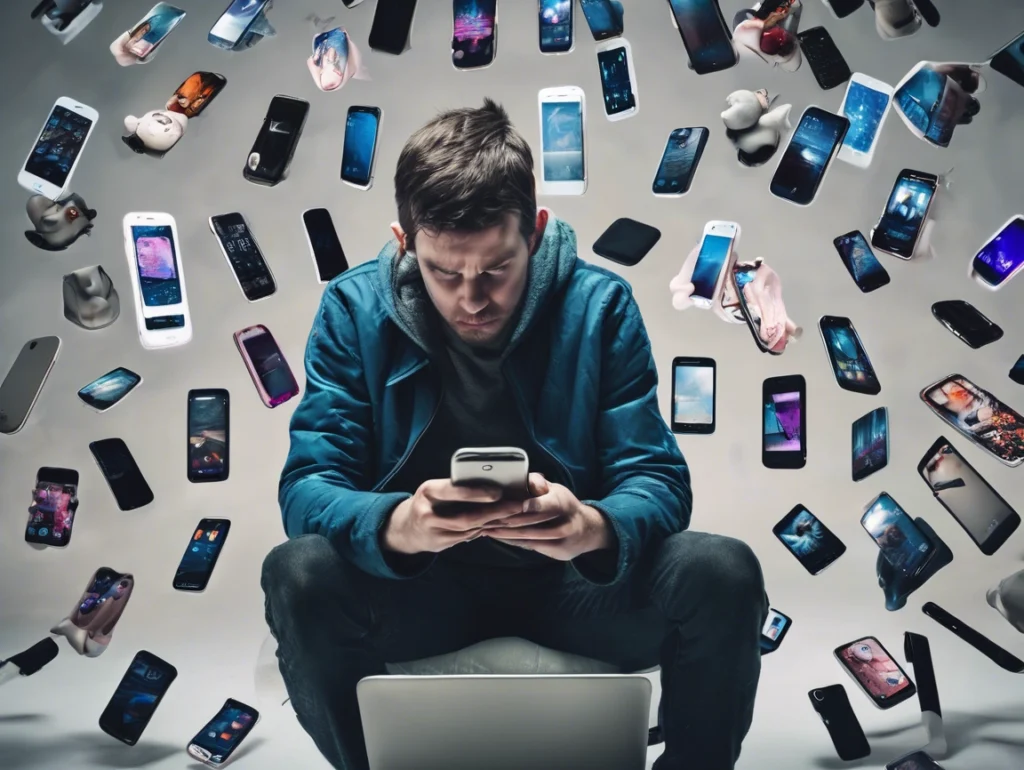Ever feel like your phone is more of a relationship partner than an actual tool? You’re not alone. Welcome to the smartphone trap – a modern maze of endless scrolling, constant notifications, and a creeping sense that something’s just not right in how we’re living.
Let me paint a picture you might recognize. You wake up, and before your feet touch the floor, your hand is already reaching for your phone. Notifications ping, Instagram stories beckon, and suddenly 30 minutes have vanished into thin air. Sound familiar?
The Digital Dopamine Rollercoaster
Our smartphones have become more than devices – they’re psychological playgrounds designed to keep us hooked. Every like, comment, and notification triggers a tiny burst of dopamine, creating a cycle of digital validation that’s hard to break. It’s what psychologists call a “variable reward system” – the same mechanism that makes slot machines so addictive.
FOMO (Fear of Missing Out) isn’t just a cute acronym anymore; it’s a genuine psychological phenomenon driving our constant digital connection. We’re terrified of being left out, so we stay perpetually plugged in, sacrificing real-world connections and mental peace.
Breaking Down the Smartphone Addiction Cycle
Here’s what’s really happening when we’re trapped in our digital worlds:
- Constant distraction from meaningful experiences
- Increased anxiety and social comparison
- Reduced ability to focus and be present
- Disrupted sleep patterns
- Decreased face-to-face social skills
The Social Validation Trap
We’ve outsourced our self-worth to tiny digital interactions. A post gets fewer likes than expected? Instant mood drop. Someone doesn’t respond to a message? Spiral of overthinking. Our sense of validation has become dangerously dependent on digital metrics that mean almost nothing in our real, lived experience.
But here’s the thing – recognizing the trap is the first step to breaking free. And breaking free doesn’t mean throwing your phone into the ocean (though sometimes that sounds tempting, right?). It’s about creating healthier boundaries and understanding how these devices impact our mental landscape.
Practical Steps to Reclaim Your Life
Start small. Maybe it’s putting your phone in another room while you sleep. Or setting app time limits. Or – radical idea – having an actual conversation with someone without checking your device every two minutes.
For young adults struggling with anxiety and depression, smartphone addiction can be particularly challenging. These devices promise connection but often deliver the opposite – increased isolation, heightened comparison, and a constant background noise of digital overwhelm.
The Deeper Connection We’re Missing
What we’re really craving isn’t more screen time. It’s genuine connection. Meaningful conversations. Moments of true presence. The kind of interactions where you’re fully engaged, not half-listening while scrolling.
Your mental health isn’t just about managing symptoms – it’s about creating a life that feels authentic and fulfilling. And that requires stepping back from the digital noise and reconnecting with yourself and the world around you.
A Gentle Invitation
If you’re feeling stuck in the smartphone trap, know that change is possible. It doesn’t have to be perfect. Small, consistent steps can transform your relationship with technology and, more importantly, with yourself.
Remember: You are so much more than your notifications, likes, or digital persona. Your worth isn’t measured in pixels or screen time. It’s measured in moments of genuine connection, personal growth, and the courage to live intentionally.
Ready to break free? Your real life is waiting – just on the other side of that screen.

